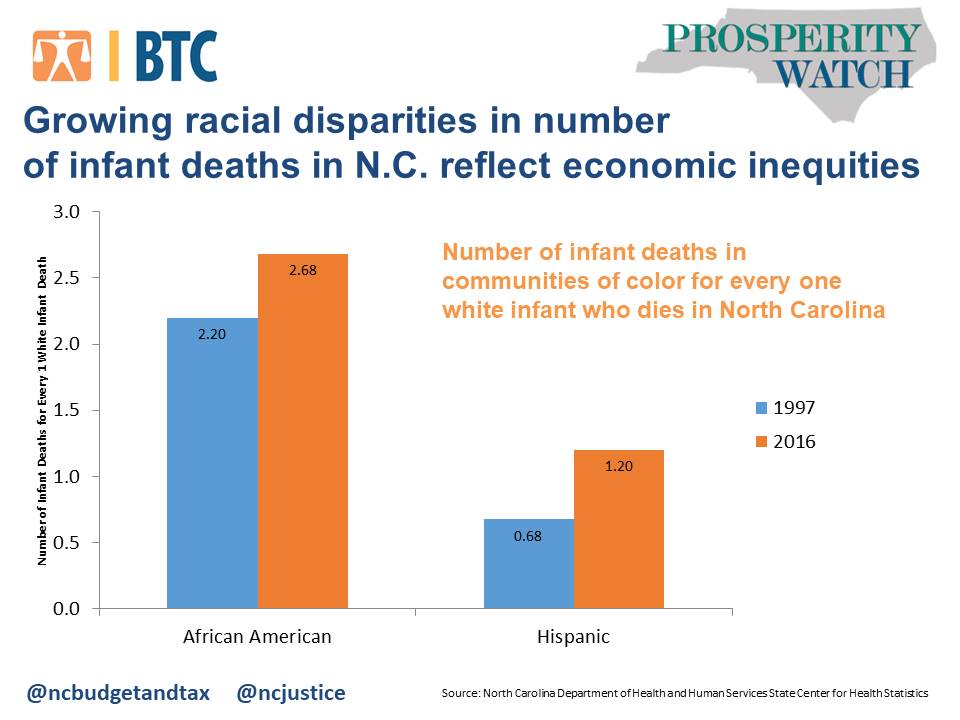Prosperity Watch, Issue 89, No. 2
Aug. 13, 2018
Infant mortality data reveal long-standing economic and social disparities that exist along racial and ethnic lines — disparities that are actually getting worse in many cases. Overall infant mortality has declined from 1991 to 2016, as the number of deaths prior to age 1 per 1,000 live births in North Carolina declined from 12.2 deaths to 7.2 deaths. However, when disaggregated by race and ethnicity, the data tell a more complex story.
The infant mortality rate is declining more rapidly for white children compared to many communities of color. From 1997 to 2016, the rate declined 22 percent for white infants but only decreased by 14 percent for African-American and Black infants. Mortality among Hispanic and Latinx infants actually increased by 25 percent during the same time period.
The more rapid decrease in infant mortality for white infants has compounded disparities that already existed across groups. Deaths among Hispanic and Latinx infants have historically been closer to white infant deaths, though there has been an increase in the percentage of Hispanic and Latinx infant deaths from 1997 to 2016. These changes equate to an increase from 2.2 to 2.68 times the number of African-American and Black infants, meaning that for each white infant that dies per thousand births, there are nearly three African-American and Black infants who die. For Hispanic and Latinx infants, these rates increased from 0.68 to 1.2 deaths for each white infant that dies per thousand births from 1997 to 2016. In addition, if the disparity gap were closed and the white infant mortality rate was reflected across all racial and ethnic groups, 238 fewer African-American and Black infants and 19 fewer Hispanic and Latinx infants would die each year.
These growing gaps in infant mortality are rooted in disparate access to economic opportunities and resources that impact health. While two leading causes of infant death in the United States are attributable to preterm births and birth defects, the underlying root causes point to social factors such as family income, access to health care and insurance, access to prenatal care, mother’s education, and experiences of discrimination and systemic racism. Addressing and eliminating racial barriers to economic opportunity is a vital step in protecting infants and giving everyone in North Carolina the chance to live full and healthy lives.
 Justice Circle
Justice Circle 
